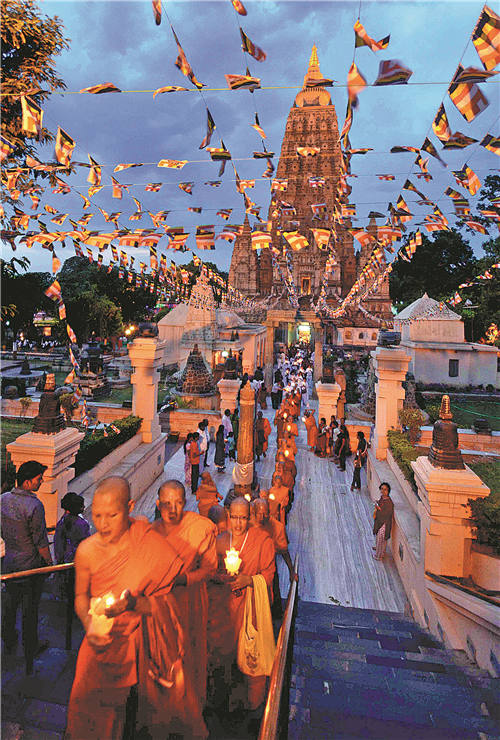

These destinations not only have the economic potential to revive local tourism and attract Buddhist scholars from across the globe, they also offer visitors a broader perspective, Zha said.
The diplomat, who has visited Bodh Gaya three times since he took office in Kolkata in 2019, hopes that the number of Chinese tourists visiting Bodh Gaya will pick up soon.
"I look forward to an influx of visitors from China, and my office is willing to facilitate cultural exchanges to strengthen tourist flows between the two countries," he said.
During his visits to Bodh Gaya, Zha organized cultural and religious events in collaboration with Chinese communities from Kolkata. He said China, which has the world's largest Buddhist population, is historically and culturally connected by the religion.
The pandemic has badly affected residents in Bodh Gaya who rely directly or indirectly on earnings from the tourism and hotel industries, as international flights at Gaya airport have been suspended since March 2020.
Tour operators said there was no increase in tourist arrivals this year ahead of Buddha Purnima, the biggest Buddhist festival celebrated in India and Nepal, which fell on May 16.
Rakesh Kumar, president of the Bodh Gaya Tourist Guide Association, said that three years ago, the two-week festival attracted 5,000 to 8,000 domestic and international tourists daily, but now the numbers have fallen to a few hundred each day.
Buddha Purnima, also known as Buddha Jayanti, celebrates the birth of Prince Siddharta Gautama more than 3,000 years ago-a Nepali prince who later became known as Gautama Buddha, the founder of Buddhism.